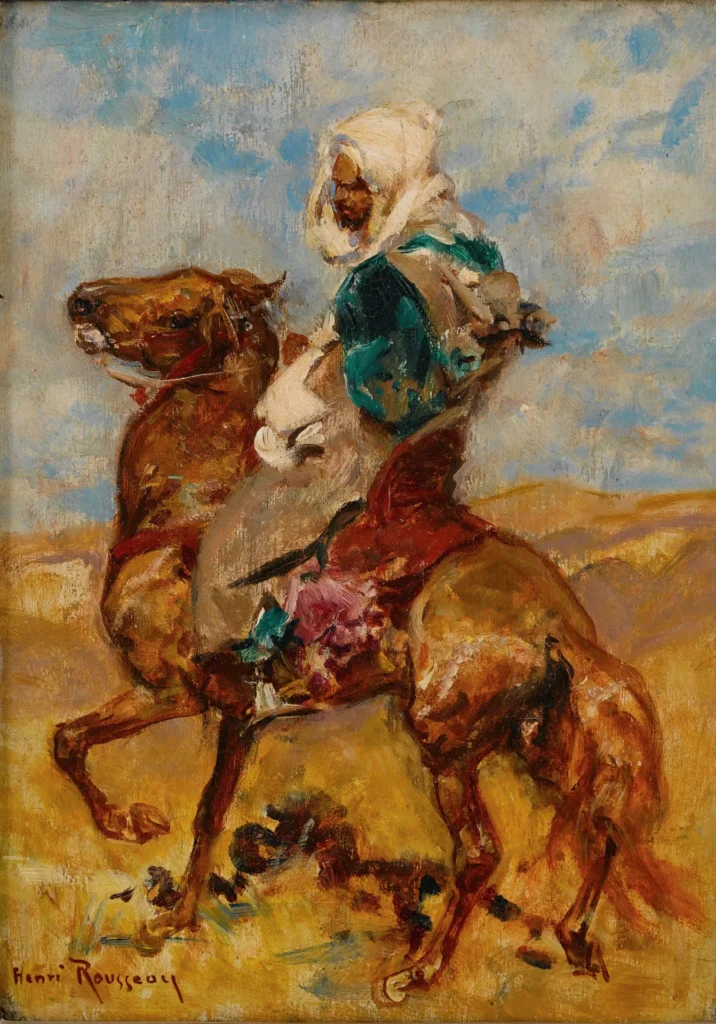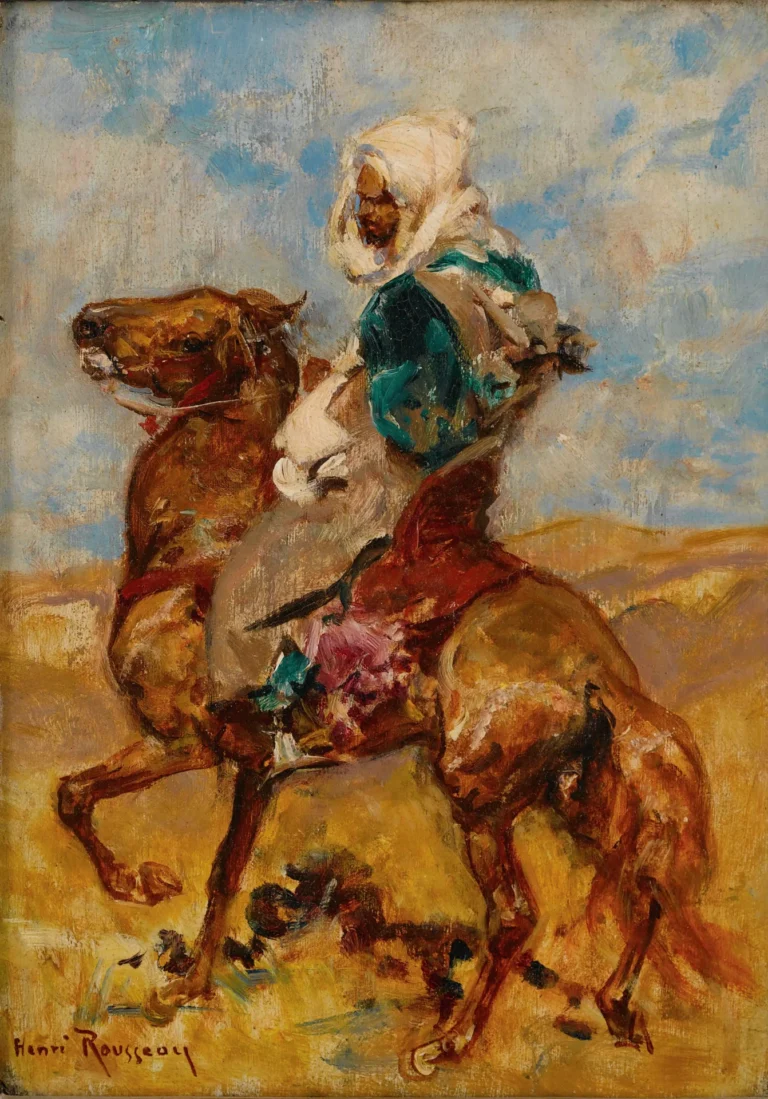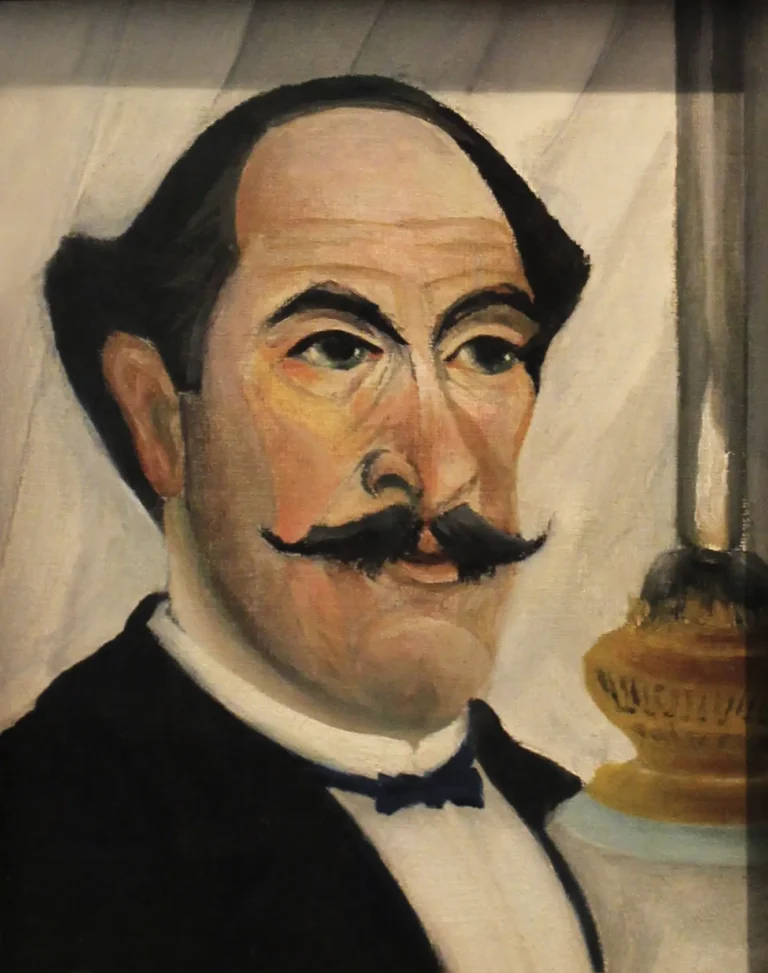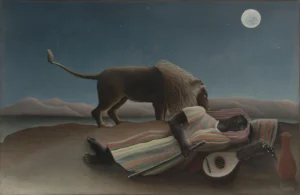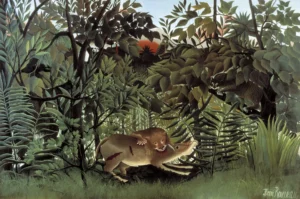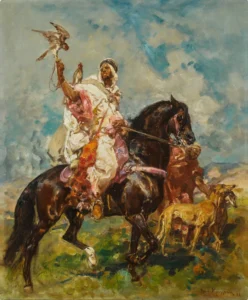North African On Horseback
North African On Horseback is a stunning painting by French artist Henri Émilien Rousseau, celebrated for his Orientalist scenes. The artwork beautifully captures a North African rider on horseback, embodying a sense of adventure and exoticism, enhanced by the presence of a falcon perched on his gloved hand. Rousseau’s distinctive style highlights the bond between man and nature while also reflecting the romanticized view of the Orient popular during the late 19th century. This piece offers a glimpse into the fascination with Eastern cultures that characterized the artistic movements of its time, inviting viewers to embark on an imaginative journey.
Late 19th Century
About the Artwork
The story behind North African On Horseback lies in Rousseau's passion for the Orientalist theme, which was prevalent among artists in the late 19th century. Fascinated with the mystique of the East, Rousseau often depicted scenes enveloped in adventure and exotic flair. This particular painting not only showcases his skill in portraying horses and riders but also reflects the broader cultural landscape of the period, where Western artists sought to interpret and represent Eastern traditions. The rider, of North African descent, symbolizes a spirit of freedom and bravery, while the falcon serves as a classic symbol of power and grace in many Middle Eastern cultures. Thus, the painting combines both local and universal themes, making it a remarkable testament to the artistic era it represents.
Did You Know
Liked what you see? Add it to your collection.
Enjoyed reading? Share it.
... continued
Subject
The painting depicts a man on horseback, likely of North African origin, creating an atmosphere of adventure and exoticism. Notably, the man has a bird, possibly a falcon, perched on his gloved hand.
Artist
Henri Émilien Rousseau was a French painter, graphic artist, and illustrator. He is best known for his Orientalist works, which often highlighted horses and riders in various settings.




